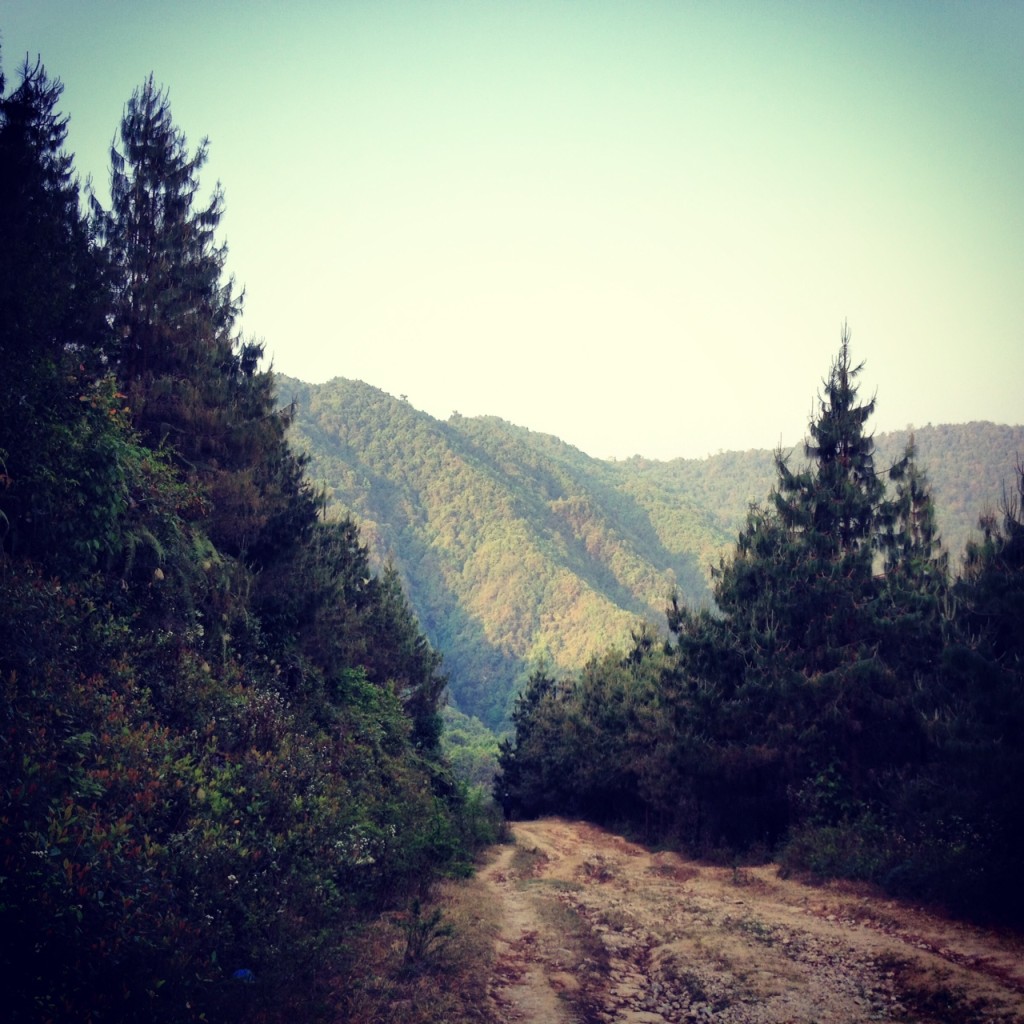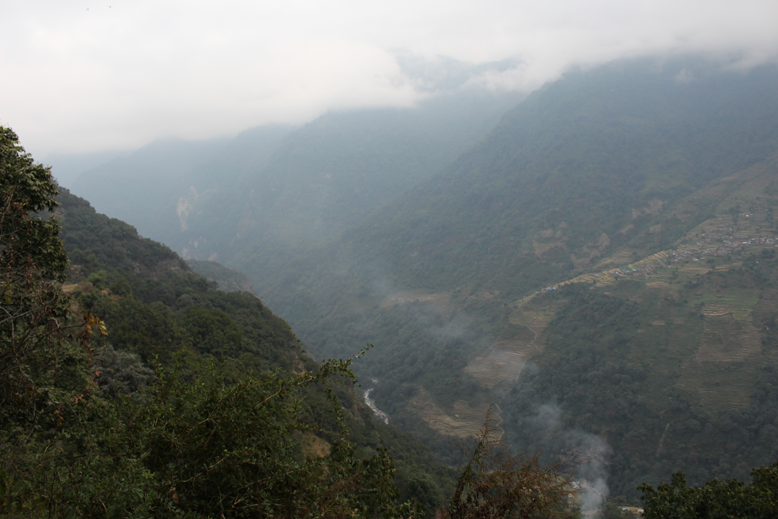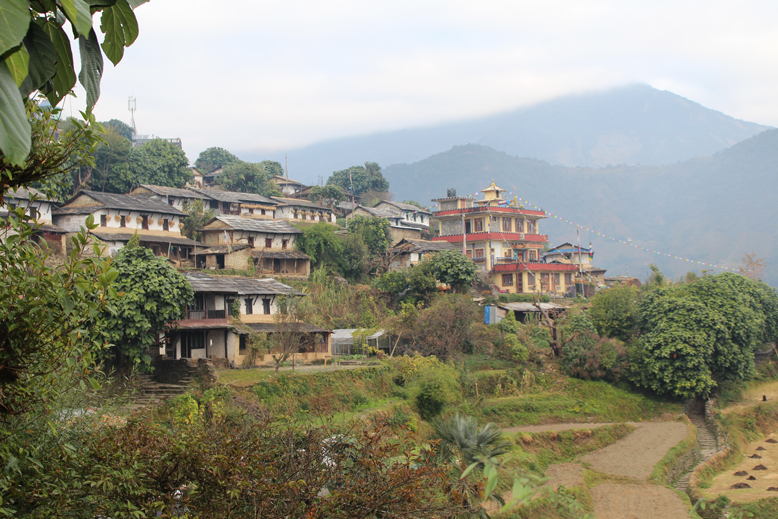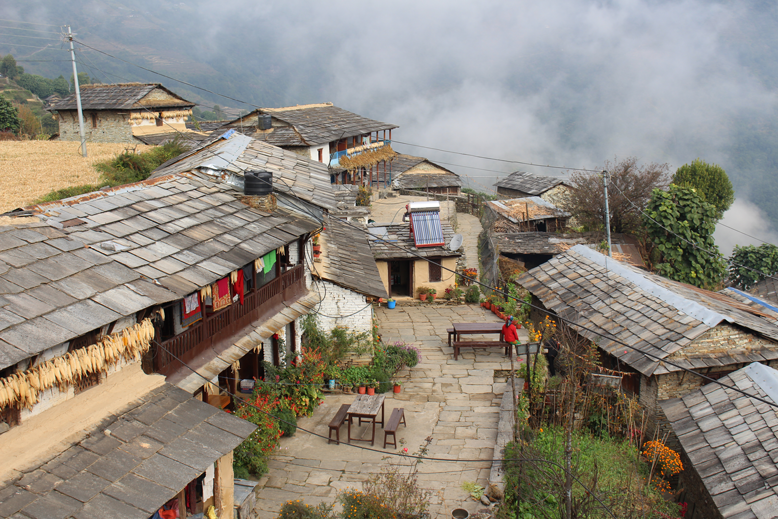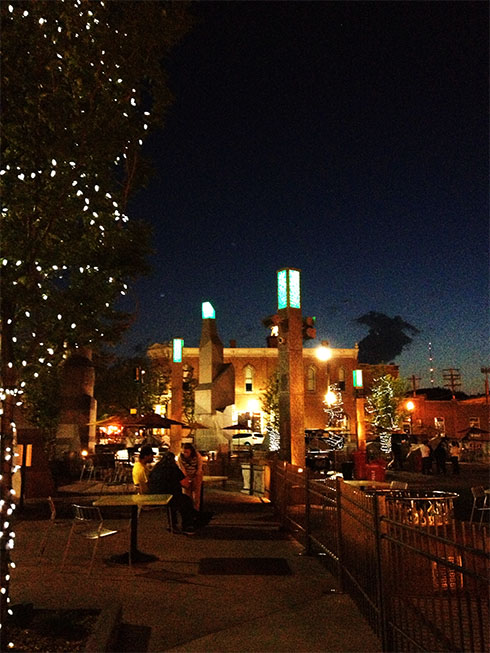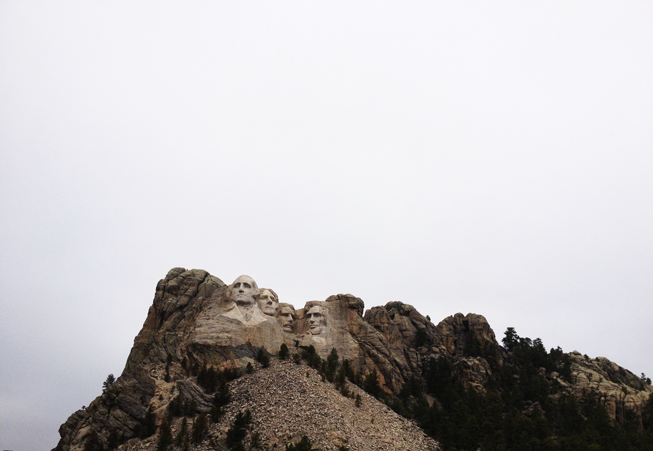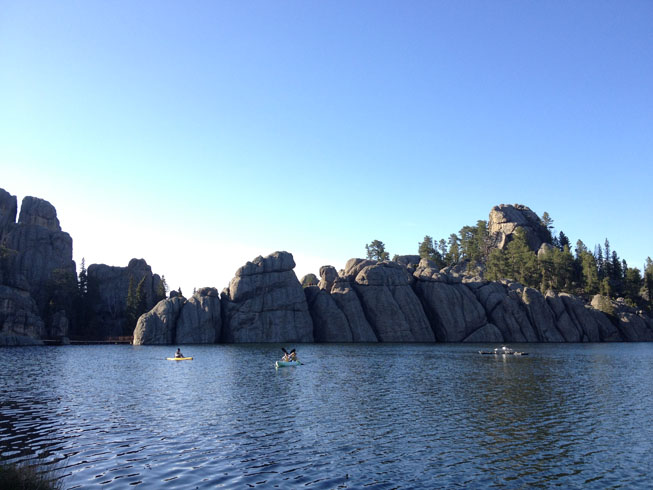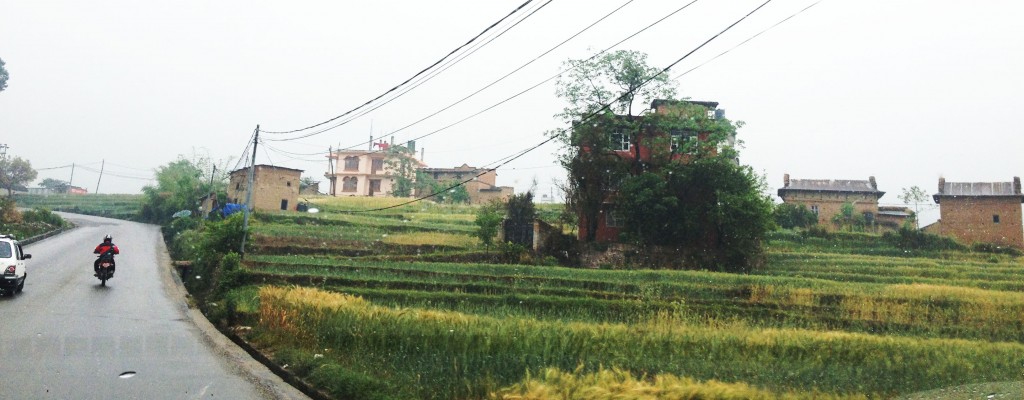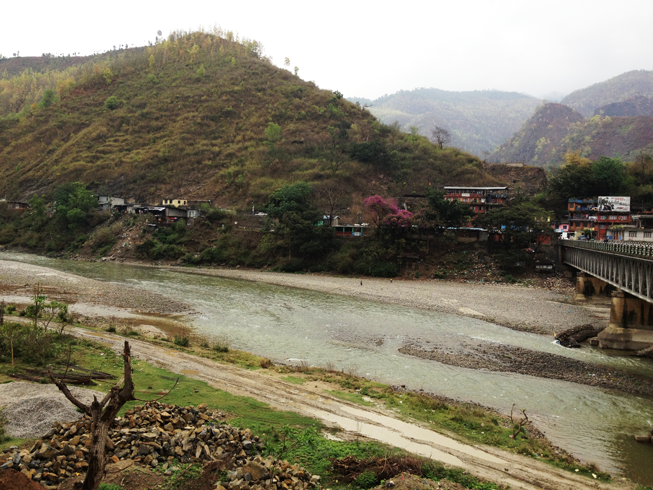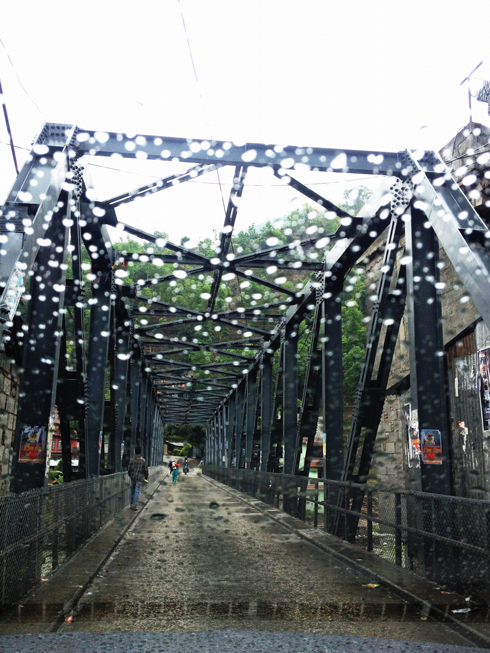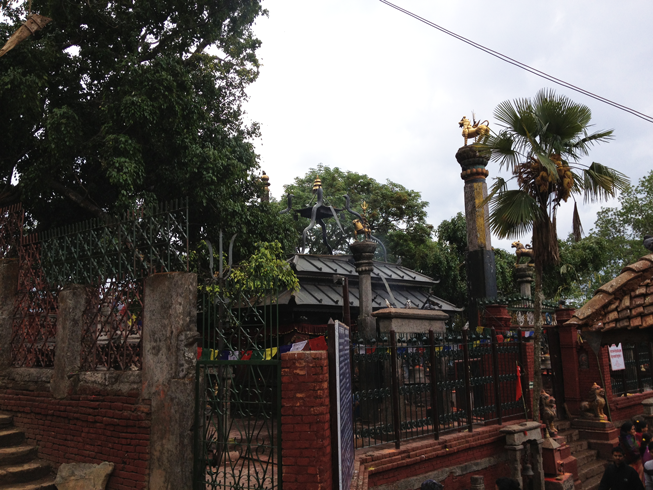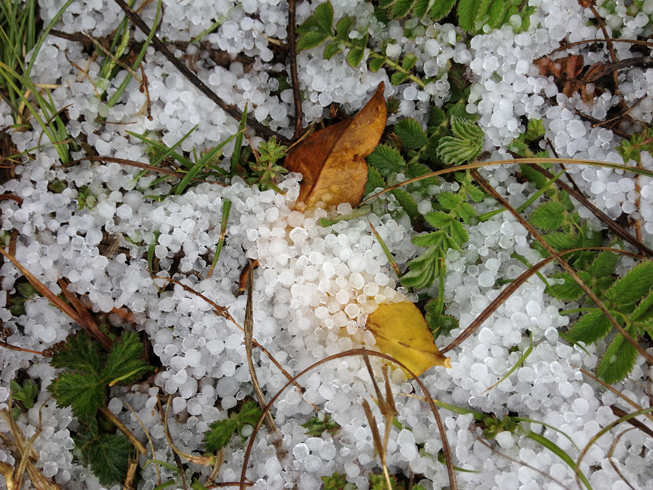Let me tell you what I like about traveling in Nepal. It is not always the overtly romanticized natural beauty of this country. Not because it is comparatively cheaper than traveling to other parts of the world. Not because majority of Nepal is still untouched by the world outside. Well, yes, all that plus – what I like the most is the warmth of the people.
It helps me connect with the place much faster and makes my travel a more meaningful experience. This is something I really miss when I go outside of Nepal especially in the western region. They have a great tourism industry, very well developed infrastructure. They have everything you need to make your travel a luxurious experience. But they lack the intimate connection I seek when I’m traveling, which has nothing to do with money. It is something I feel from inside that I cannot explain.
2013: A Recap
I remember writing my 2012 year-end post, was talking about how eventful that year was. 2013 turned out to be even extra eventful, this year marked a beginning of a lot of important aspects of my life personally and spiritually. Traveling was my top priority and I managed to do that. Hope to continue traveling in 2014 as well. My mission this year is to travel across Nepal.
I moved out of the US – it was completely my decision based on my priorities. Somewhere I hope I have sowed the seeds of entrepreneurial bug in me as well. The consequences of all the steps I have taken will only be known in future. I have no clue where life will take me, the best I can do is listen to my intuition and follow my heart. Even if I make gazillion mistakes, I hope to learn from them. I hope to fail, fail fast and move on to my next mistake. I hope to keep moving and never stop.
I am equal parts excited and nervous about 2014. Whatever comes my way – be it the adversities, the failures, or the success – I want to embrace it all with open arms. I am what I choose and I choose to write my own story, I choose to follow my dreams, and I choose to just be – be me. Hopefully, I’ve grown a tad bit wiser than 2012, perhaps a little more humble, always open minded and always curious.
Here’s wishing you and me a great year ahead!
Happy New year 2014.
Shailiza
Ghandruk Trip
I had been wanting to go to Ghandruk forever. This time when the opportunity knocked in, I wasn’t going to say no. So, when we finally got there unfortunately, we missed out on seeing the mountain range thanks to a thick fog that wouldn’t buzz. But we did get a few seconds view of Annapurna, that alone was enough to make the trip worthwhile. The fact is – Ghandruk is such a beautiful, peaceful, clean place to be, for someone who’s coming from Kathmandu-it’s nothing less than a piece of heaven.
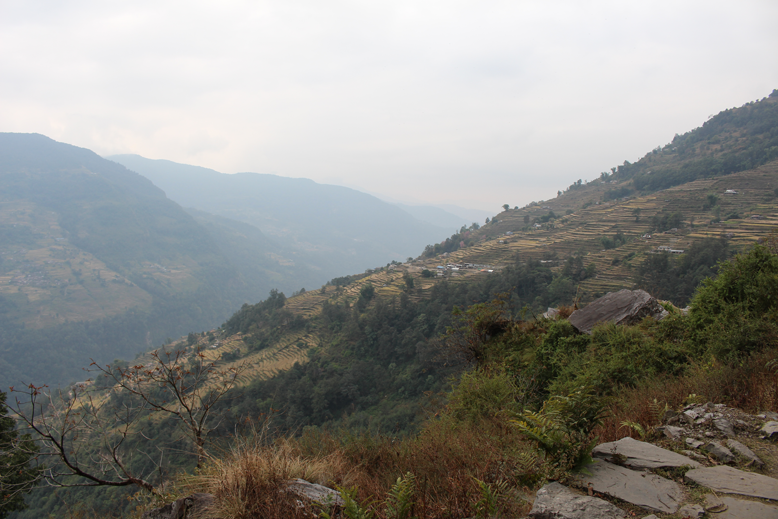
On the way to Ghandruk
I was very impressed with the community coming together to preserve traditional Gurung culture. There are a couple of museums dedicated to its Gurung natives if one wants to check out. The first thing I noticed about this place is how clean it is. Not surprisingly, it’s the women groups who regularly organize cleaning campaigns here with a special focus on recycling non-compostable materials. No matter where you stay in Ghandruk – it will cost you pretty much the same, as it’s run by a single entrepreneurial community. I thought hotel stay was extremely cheap – Rs 300 per night for a room with three beds. But food price was quite something else. We stayed at Hotel Sakura – it was extremely clean. I’m pretty sure it was cleaner than most of the hotels I’ve stayed in the US.
I found Ghandruk to be a great mix of old and new world. World is so ahead of Nepal – but here is this tiny village located 1939 meters above sea level. They finally have direct access to road. It’s almost so remote that it seems almost unreachable but at the same time it is so well equipped with the modern amenities. They have their own hydro plants that keep the electricity running, solar power to heat water. Women groups who actively participate in embracing sustainable development. On top of all this mule’s still provide the primary transportation service for this place. If that’s not cool, I don’t know what is.
Given below is a few snippets from our Ghandruk trip:
Ghandruk Experience from Shailiza Manandhar on Vimeo.
Pick-Your-Own Fruits and Vegetables Farm
There is a growing demand for handmade products in America. The culture is slowly but surely shifting from accepting homogeneous mass products to crafty meticulously handmade items. On top of that American consumers are also willing to spend more money for such products. With the subsequent advent of Etsy an e-commerce site that lets users buy and sell handmade items, and other similar online portals this trend is only moving upward. Not surprisingly, pick-your-own farm is growing equally popular in the U.S. Pick-your-own or you-pick (U-Pick) farm allows you to literally hand pick fresh produce directly from the farmer’s farm. It is as simple as going to a farm thats signed up for this program and hand picking produce you want to buy.
Picking my own vegetables directly from the farm is something I have never done. So, it seemed like an exciting opportunity to get in touch with nature and build that intimate relationship with the food that I would devour. Recently, made a trip to the farm near by and picked 3 pints of raspberry. The first and foremost reason this trend is gaining popularity is the luxury that gives people to hand pick their own fresh produce. Also it significantly reduces the carbon footprint when you cut out the middleman, making it very cost effective for farmers as well as the consumers.
Considering the fact that the farm was about half-an-hour drive – adding the fuel cost plus carbon emission and merely 3 pints of raspberry that I bought. It wasn’t necessarily a very ‘green’ experience for me. Had I bought tons of fresh produce, it would have perfectly fit the bill. Nonetheless, it was still a great experience. If you buy bulk products – this is definitely a great way to save money, reduce carbon footprint, and find fresh produce.
And what do you know! I managed to capture a few moments of my berry picking experience. Here’s the video for some inspiration:
Berry Picking from Shailiza Manandhar on Vimeo.
How to Get a Standing Ovation – By Guy Kawasaki
In today’s day and age – public speaking is a must have skill. You need to be able to speak and express well. If you’re hesitant or you think you can get away with it, you are so wrong, there is seriously no way out. Being a complete introvert- public speaking is one of my greatest fears. But I know, if I don’t do it now – I’ll never know how to ignore my fears. One of the bests advice I’ve received is to focus on the message. In case, you do get nervous – learn to ignore it. You are not important – what you’re saying is far more important. Find the passion to educate, entertain and inspire your audience, then you’ll find your purpose and your voice. This desire I have to be a perfect speaker is also making it difficult for me to get over my fears. That’s why it doesn’t hurt when someone like Guy Kawasaki shares his words of wisdom on ‘How to Get a Standing Ovation‘. It was recently shared on linkedIn and other platforms. Turns out it was written long ago.
- Have something interesting to say. This is 80% of the battle. If you have something interesting to say, then it’s much easier to give a great speech. If you have nothing to say, you should not speak. End of discussion. It’s better to decline the opportunity so that no one knows you don’t have anything to say than it is to make the speech and prove it.
- Cut the sales pitch. The purpose of most keynotes is to entertain and inform the audience. It is seldom to provide you with an opportunity to pitch your product, service, or company. For example, if you’re invited to speak about the future of digital music, you shouldn’t talk about the latest MP3 player that your company is selling.
- Focus on entertaining. Many speech coaches will disagree with this, but the goal of a speech is to entertain the audience. If people are entertained, you can slip in a few nuggets of information. But if your speech is deathly dull, no amount of information will make it a great speech. If I had to pick between entertaining and informing an audience, I would pick entertaining—knowing that informing will probably happen too.
- Understand the audience. If you can prove to your audience in the first five minutes that you understand who they are, you’ve got them for the rest of the speech. All you need to understand is the trends, competition, and key issues that the audience faces. This simply requires consultation with the host organization and a willingness to customize your introductory remarks. This ain’t that hard.
- Overdress. My father was a politician in Hawaii. He was a very good speaker. When I started speaking he gave me a piece of advice: Never dress beneath the level of the audience. That is, if they’re wearing suits, then you should wear a suit. To underdress is to communicate the following message: “I’m smarter/richer/more powerful than you. I can insult you and not take you serious, and there’s nothing you can do about it.” This is hardly the way to get an audience to like you.
- Don’t denigrate the competition. If you truly do cut the sales pitch, then this won’t even come up. But just in case, never denigrate the competition because by doing so, you are taking undue advantage of the privilege of giving a speech. You’re not doing the audience a favor. The audience is doing you a favor, so do not stoop so low as to use this opportunity to slander your competition.
- Tell stories. The best way to relax when giving a speech is to tell stories. Any stories. Stories about your youth. Stories about your kids. Stories about your customers. Stories about things that you read about. When you tell a story, you lose yourself in the storytelling. You’re not “making a speech” anymore. You’re simply having a conversation. Good speakers are good storytellers; great speakers tell stories that support their message.
- Pre-circulate with the audience. True or false: the audience wants your speech to go well. The answer is True. Audiences don’t want to see you fail—for one thing, why would people want to waste their time listening to you fail? And here’s the way to heighten your audience’s concern for you: circulate with the audience before the speech. Meet people. Talk to them. Let them make contact with you. Especially the ones in the first few rows; then, when you’re on the podium, you’ll see these friendly faces. Your confidence will soar. You will relax. And you will be great.
- Speak at the start of an event. If you have the choice, get in the beginning part of the agenda. The audience is fresher then. They’re more apt to listen to you, laugh at your jokes, and follow along with your stories. On the third day of a three-day conference, the audience is tired, and all they’re thinking about is going home. It’s hard enough to give a great speech—why increase the challenge by having to lift the audience out of the doldrums?
- Ask for a small room. If you have a choice, get the smallest room possible for your speech. If it’s a large room, ask that it be set “classroom style”—ie, with tables and chairs—instead of theatre style. A packed room is a more emotional room. It is better to have 200 people in a 200 person room than 500 people in a 1,000 person room. You want people to remember, “It was standing room only.”
- Practice and speak all the time. This is a “duhism,” but nonetheless relevant. My theory is that it takes giving a speech at least twenty times to get decent at it. You can give it nineteen times to your dog if you like, but it takes practice and repetition. There is no shortcut to Carnegie Hall. As Jascha Heifitz said, “If I don’t practice one day, I know it. If I don’t practice two days, my critics know it. If I don’t practice three days, everyone knows it.” Read this article to learn what Steve Jobs does.
- It’s taken me twenty years to get to this point. I hope it takes you less. Part of the reason why it took me so long is that no one explained the art of giving a speech to me, and I was too dumb to do the research. And now, twenty years later, I love speaking. My goal, every time I get up to the podium, is to get a standing ovation. I don’t succeed very often, but sometimes I do. More importantly, I hope that I’m standing and clapping in the audience of your speech soon.
Source: http://blog.guykawasaki.com
How to Make the Decisions That Will Define You – By Jeff Haden
Recently on LinkedIn I came across this post by Jeff Haden – about choosing the harder path. It instantly clicked with me. In a professional world, you will most certainly come across moments when you will have to make choices. Choices that could be very minor to something significantly major. You may not necessarily know it, yet one day when you look back and connect the dots – you realize why you chose the path you chose; which will then come to define you.
1) Effort creates its own reward.
The hard choice usually requires the most effort and the greatest personal investment on your part: And when you put in the time, you learn more, grow more, and achieve more. Always choose to work harder. It always pays off.
It almost sounds like a cliche. But it’s true. You may have to work longer, harder. But in the long run – you’ll be glad you put in that effort.
2) Luck is occasional, but intent lasts forever.
Luck in today’s day and age is purely opportunity meeting your preparation. Luck matters but it’s the intent that counts. He gave an excellant example what he meant by this:
“We’ll go ahead and ship this… if we’re lucky the customer will never notice the problem.” (Almost everyone who has worked in software or manufacturing has decided to let a quality problem go so they can meet a ship/release date and hopefully avoid the cost of rework. Sometimes you get lucky…and sometimes you don’t.)
While it’s painful to make the, “I’m sorry, but we’re going to be a day late but we found a quality problem we need to take care of,” call, it’s a lot worse to answer the, “How could you ship us this garbage?” call.
3) The angel lies in the details.
Shortcuts, high level decisions, quick fixes… sometimes they work out, but they also mean you lose the chance to spot other problems, identify other solutions, or find different ways to improve. “Quick and easy” creates an illusion of success. Effort and application – and a willingness to do what others are not willing to do – builds the foundation for lasting success.
4) Hard choices build outstanding reputations.
Staying late to complete a project, making a tough call to a customer, tackling an employee issue head-on, biting the bullet and taking responsibility when you make a mistake… you don’t have to do any of them. In a crisis there are always easier options.
But there is usually only one right option — even if it’s the least attractive option.
We all admire people who sacrifice, who compromise, who stand tall in the face of adversity – so do the right thing, even if the right thing is the hardest thing, and in time you may become someone other people admire.
5) The hard choice is always binary.
It’s easy to convince yourself that a black-and-white situation is actually gray. Usually it’s not: Needing to fire the employee who doesn’t fit; needing to bypass a senior employee for promotion for a person less tenured but more deserving; needing to call investors to let them know results are falling short of forecast… you can talk yourself into thinking there are reasons not to make the hard decision, but in the end you’re just rationalizing.
Usually there are a host of wrong answers, and one right answer. Think about a tough decision you face. You can probably list a number of easy answers – and one very difficult choice. Bite the bullet and pick the hard choice.
– Link to the original article.
It’s an Imperfect World
Today is 4th of July, America’s independence day – declared July 4, 1776.
If that gives you any idea, Nepal is an infant compared to America or probably not even conceived at the moment. Although never been colonized by the British. Nepal became free from brutal Rana reign in 1951, who ruled for 100 years leading this nation into the dark age. Post liberation, Nepal established multi-party constitutional monarchy that didn’t exactly go too well – as soon after followed a decade long civil war between maoists and government forces. Fast-forward to 2013 Nepal is still reeling from long suffering. For a country who’s been through so much in such a short time, I would say we are not doing too bad. Unfortunately we are not doing so great either. But this is a good reminder that we still have a long way to go. The goal is not to look at the US (or any other country for that matter) and see where we need to go. The goal is to look within ourselves and tread our own path. No country is perfect, not even the most highly developed nations of the world. So, keep an open mind, keep the faith, be hopeful, do what you do best, do good, be good and everything else will fall into place.
Although never been colonized by the British. Nepal became free from brutal Rana reign in 1951, who ruled for 100 years leading this nation into the dark age. Post liberation, Nepal established multi-party constitutional monarchy that didn’t exactly go too well – as soon after followed a decade long civil war between maoists and government forces. Fast-forward to 2013 Nepal is still reeling from long suffering. For a country who’s been through so much in such a short time, I would say we are not doing too bad. Unfortunately we are not doing so great either. But this is a good reminder that we still have a long way to go. The goal is not to look at the US (or any other country for that matter) and see where we need to go. The goal is to look within ourselves and tread our own path. No country is perfect, not even the most highly developed nations of the world. So, keep an open mind, keep the faith, be hopeful, do what you do best, do good, be good and everything else will fall into place.
Road Trip: South Dakota (SD)
Road trip across America is seriously an adventure of a lifetime. The vastness of this country gives you a myriad of choices to explore and experience new places and culture. Your American journey is incomplete without the great American road trip. Having traveled across the east and west coast, I wanted to take a major road trip across the Dakotas. To appreciate the beauty of the flatness of the American midwest and, also due to a slight influence of Robert Pirsig’s cult classic ‘Zen and the Art of Motorcycle Maintenance’.
South Dakota is best known for Mount Rushmore National Memorial monument. The rocky mountain carved with four faces of the most prominent US presidents. Namely: George Washington, Thomas Jefferson, Theodore Roosevelt and Abraham Lincoln. If you came all the way to South Dakota just to see Mt Rushmore, you would be highly disappointed. The good news though, there’s more to Southwest South Dakota than simply the Mt. Rushmore.
Rapid City
We began our journey from Rapid city. It’s the main city in the tourist area also known as the Gateway to the Black hills. With the inflow of international and local tourists flocking this region, this place gives a really cool small town, rich cultural vibe.
Mount Rushmore National Memorial
Located in Keystone, SD this memorial is about 30 miles from Rapid city. Interesting facts about this monument: Over 450,000 tons of rock were removed from this mountain to carve the four presidential faces. It took 14 years (1927 – 1941) to complete the sculpture. Inside the monument they have built a nice park to walk around the mountain including museums with historical information about the details of the building/sculpting process. And information about each president.
Crazy Horse Memorial
After spending an hour or so at Mt. Rushmore, we made our way to Crazy Horse which is approx. 16 miles away. The memorial dedicated to a native american warrior – Crazy Horse, depends entirely on visitors fee with absolutely no federal government help. That’s why it has taken more than 60 years to finish carving of the face alone of the crazy horse. If completed, it could become world’s largest mountain carving ever. Interesting fact: The face carving of crazy horse alone can fit all four of Mt Rushmore’s presidential heads.
Custer State Park
The natural beauty of this park allows you to reflect, reconnect and introspect. This park is spread across 71000 acres. Offers a variety of activities: kayaking, fishing in the lakes, hiking, camping as well as rock climbing.
Main highlights of the park:
- Sylvan lake
- Needles eye
- 18-mile long wildlife loop
Badlands National Park
We ended our journey with a breathtaking drive through the scenic Badlands National park. Badlands of south dakota makes you feel so insignificant in this world. The beauty of our mother earth, the universe, this unknown power all coming together – to form structures so massive and awe-inspiring. There are many things to do here; from camping, hiking to learning about geologic formations. But I bet, nothing would beat stargazing on a clear night sky.
I managed to shoot a few snippets of our road trip. Given below is the compilation:
Trip Across the Heartland of South Dakota from Shailiza Manandhar on Vimeo.
More pictures from this road trip can be found on my instagram (@shailza) account as well.
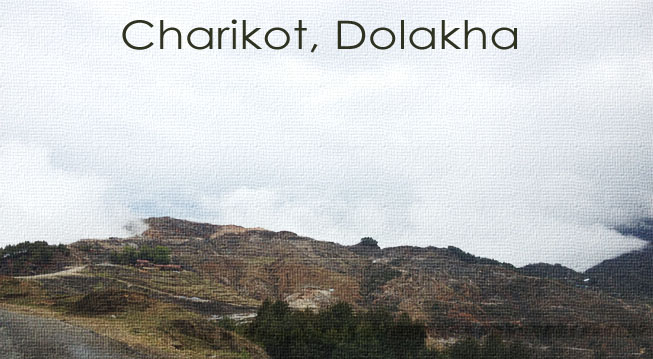 Charikot, the headquarter of Dolakha district is about 130 km from the capital city, Kathmandu. Besides offering a stunning view of the mountain range; domestic tourists flock this region to pay respect to Dolakha Bhimsen which has its own religious importance. Our initial plan was to hike to Kalinchowk the next day from Charikot. Not surprisingly as life would have it – didn’t exactly turn out the way we expected.
Charikot, the headquarter of Dolakha district is about 130 km from the capital city, Kathmandu. Besides offering a stunning view of the mountain range; domestic tourists flock this region to pay respect to Dolakha Bhimsen which has its own religious importance. Our initial plan was to hike to Kalinchowk the next day from Charikot. Not surprisingly as life would have it – didn’t exactly turn out the way we expected.
Accompanied by my brother, cousin, and an awesome driver (along with his kick-ass hindi movie song playlist), our journey began early in the morning at 7:30 a.m. from Tinkune. It was my first time witnessing 6-lane highway in Nepal that leads all the way to Suryabinayak. Possibly the only bump-free non-existent-traffic-jam ride I had experienced in Nepal.
As we bid farewell to Kathmandu valley we were greeted by an utterly breathtaking sceneries. Despite the heavy rain, it didn’t quite affect our scenic drive. Leaving behind Bhaktapur, a long stretch of Banepa, and Dhulikhel, soon started a winding road to Dolakha.
A must do on your way to Dolakha is to stop by Dolalghat; to try out some fresh local fish. There are quite a few eateries around. Nomatter where you choose to go I guarantee an excellent tasting fish with a lot of Nepali dish choices.
Sunkoshi river (Dolalghat)
Picture above: Dolalghat eateries
After an appetizing meal we made our way to Khadichaur. Quick note: about half-an-hour drive from Khadichaur the two-way highway is reduced to one lane, making the trip all the more adventurous. Picture below: Khadichaur bridge.
Near Mude, closest town to Charikot.
And we finally reached our destination. Picture below: Charikot downtown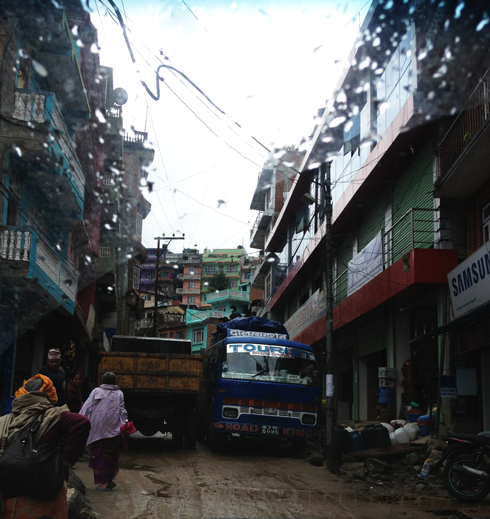
Reached Bhimeshowr temple area around 1 p.m.
In the picture below: Bhimeshowr locals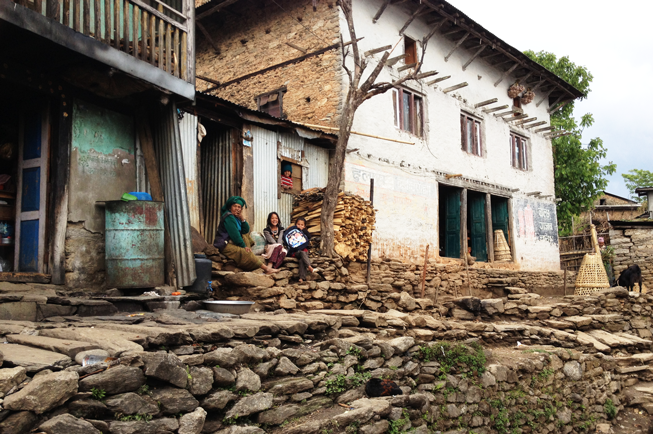
My brothers running ahead of me. At the end of this stairway lies the temple.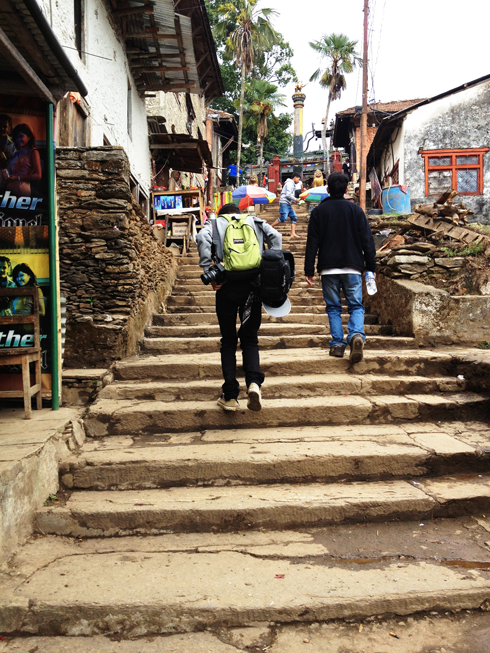
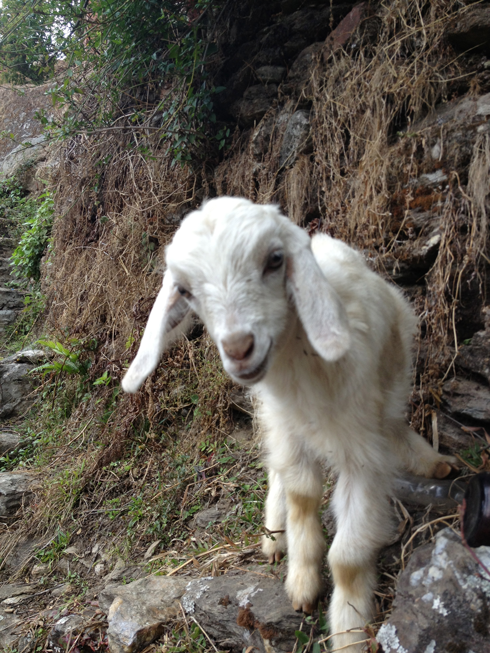
Hello! Hello! smiling mini goat 🙂

Thaali for lunch. Great food outside the vicinity of the temple.
It was a cloudy rainy day, didn’t get to see the mountain range. Still was a memorable trip. A goat casually walking by.
A goat casually walking by.
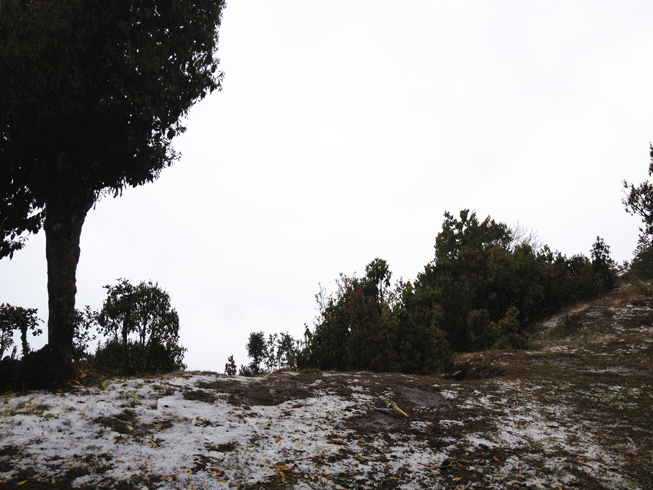 On our way back it seemed to be snowing in Mude. Upon a closer look we discovered it was a small pea-sized hail. **Majestic**
On our way back it seemed to be snowing in Mude. Upon a closer look we discovered it was a small pea-sized hail. **Majestic**
